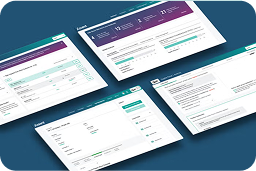Automotive original equipment manufacturers (OEMs) and suppliers are rallying around a new standard for forced labor due diligence: the Automotive Industry Action Group (AIAG)’s Due Diligence Reporting Template (DDRT). That’s good news for teams tired of juggling different questionnaire formats from every customer.
But clarity on format doesn’t remove the hard work of compliance. Regulatory authorities still expect proof of due diligence: supplier engagement, evidence review, and corrective actions. While the DDRT helps standardize disclosures, your program still needs to operationalize them.
This blog explains what the DDRT covers, and what it does not, and how Assent helps manufacturers like you turn reporting into measurable risk reduction.
What Is the AIAG DDRT & Why It Matters
The DDRT is a free, standardized template created through AIAG in collaboration with major automakers. Its goal is straightforward: Give suppliers one consistent way to disclose identified supply chain risks — especially potential forced labor involvement — so OEMs don’t request the same information in six different formats. Standardization reduces duplication, confusion, and administrative burden across the supply chain.
For suppliers, that means fewer disparate spreadsheets and portals. For OEMs, it means better comparability across responses. Overall, it’s a move toward common expectations in a complex, multi-tier ecosystem. And the business impact is less time formatting responses, and more time investigating true risk, prioritizing actions, and keeping product moving.
Where the DDRT Stops: The Operational Gap
While the DDRT simplifies reporting, it isn’t a compliance program on its own. Regulations and customer requirements generally call for:
- Direct supplier engagement to assess risk and collect evidence
- Ongoing monitoring to catch emerging risks
- Remediation and corrective actions, or escalation if issues persist
- Program reporting aligned to jurisdictional requirements
The DDRT focuses on standardized disclosure and, in many programs, multi-tier mapping input. It doesn’t replace the need to contact suppliers, validate documentation, assign corrective actions, or create auditable outputs for laws like the Uyghur Forced Labor Prevention Act (UFLPA) or Canada’s modern slavery reporting. In short: DDRT helps your team see, while a compliance platform helps your team act.
Business impact: Without an operational layer, teams risk response delays, inconsistent evidence collection, and stalled shipments if authorities or customers ask for proof.
How Assent Complements the DDRT
At Assent, we help manufacturers translate the DDRT-driven insights into an end-to-end due diligence program that addresses forced labor risks. By combining AIAG’s framework with Assent’s platform, automotive businesses can strengthen supplier collaboration, reduce risk, and confidently meet leading industry requirements. Here’s how the pieces fit together:
1) Engage Suppliers With Precision
Assent’s platform sends targeted questionnaires, enables supporting document uploads, and provides multilingual guidance so suppliers see only what’s relevant and respond faster with higher-quality data. That drives completion rates and reduces back-and-forth communication.
Business impact: Faster time to compliance, less chasing suppliers for data, and higher quality data for decision-making.
2) Monitor Risk Continuously
Assent enables ongoing screening and monitoring to identify adverse media and other risk indicators tied to forced labor. Programs evolve to make compliance a continuous process rather than a point-in-time event.
Business impact: Early detection prevents surprises, mitigates risks, and protects market access.
3) Review Evidence & Drive Remediation
Where documentation review and corrective actions are required, teams can access our expert review service to validate evidence and track remediation plans through to completion. This keeps your program audit-ready and aligned with regulatory expectations.
Business impact: Reduced enforcement exposure and more resilient supplier relationships.
4) Report With Confidence
When dashboards and annual reporting outputs are aligned with global standards, stakeholders — from compliance to procurement to the C-suite — see progress and gaps clearly. For example, if goods are detained under UFLPA, Assent provides a summary of your due diligence program validated by external counsel to support your response.
Business impact: Defensible positioning, faster escalations, and fewer revenue disruptions.
Quick snapshot: The DDRT & Assent
- The DDRT: Standardized disclosure template and multi-tier mapping input
- Assent: Supplier engagement, evidence review, remediation workflows, continuous monitoring, and auditable reports
- Together: A streamlined way to collect data and a robust way to act on it at scale
Practical Next Steps for Automotive Suppliers
1) Map your obligations. Identify which customers expect the DDRT responses and which regulations apply to your products and markets. Use the DDRT where requested; ensure you also have program processes for engagement, validation, and remediation.
2) Prioritize high-risk suppliers. Use the DDRT-aligned signals and external risk data to triage suppliers for immediate outreach. High-risk tiers (upstream materials, processing, or geographies linked to forced labor) need early attention. Assent supports ongoing due diligence so you can update the DDRT if information changes.
3) Operationalize engagement. Build repeatable workflows for questionnaires, document requests, evidence review, and corrective actions. If you rely on spreadsheets and inboxes, your team will struggle to scale as requests grow. Assent centralizes these steps with a supplier-friendly experience.
4) Monitor and refresh. Move from annual snapshots to ongoing monitoring so risk isn’t discovered only at audit time. Keep dashboards current and share improvements with customers proactively.
The Bottom Line
AIAG’s DDRT brings clarity to how risks are disclosed across the automotive supply chain. But to meet regulatory requirements and customer expectations, manufacturers need a program that turns disclosures like the DDRT into action: supplier engagement, evidence review, remediation, and continuous monitoring. That’s what Assent’s AI–enhanced platform delivers.
Actionable takeaway: Use the DDRT to standardize inputs and Assent’s platform to standardize outcomes for reduced risk, a resilient supply chain, and uninterrupted market access.
Next step: Book a demo with an Assent expert today to learn how we can help you meet your forced labor due diligence requirements and maintain market access.
FAQ: Due Diligence Reporting Template (DDRT)
Get answers from Assent’s industry compliance experts about the DDRT.








